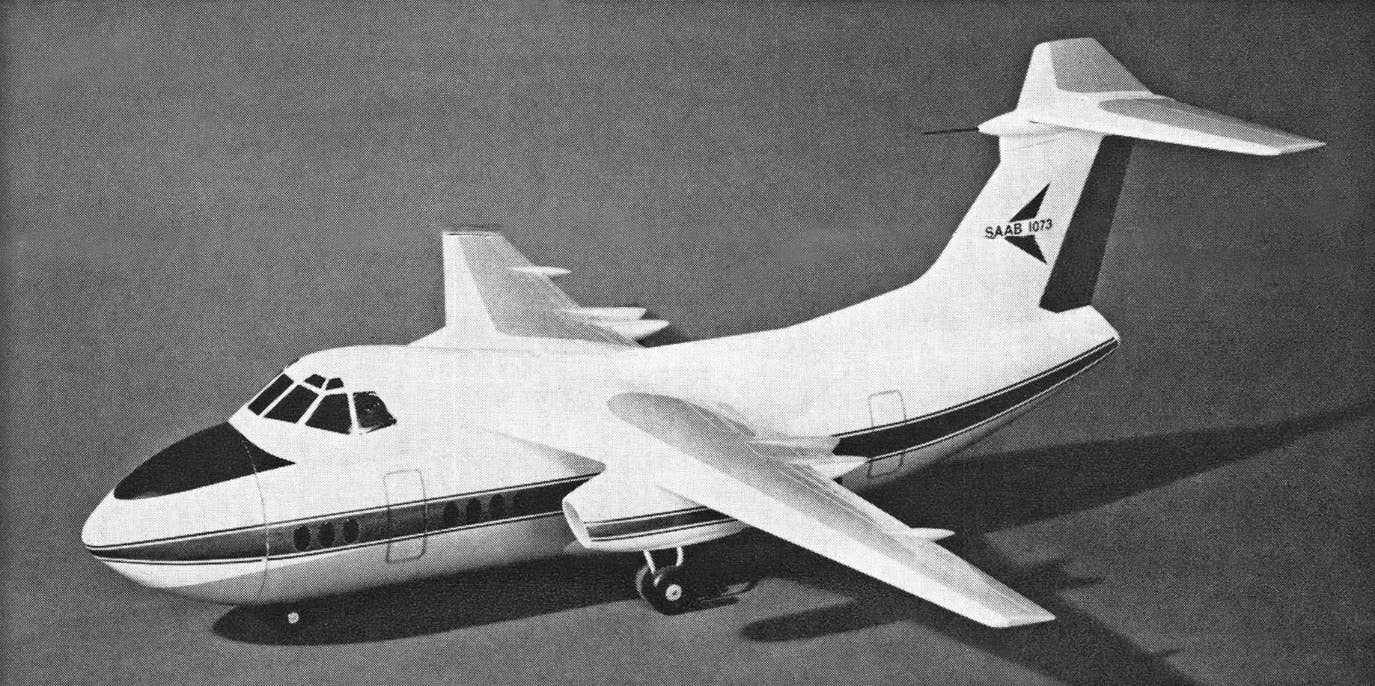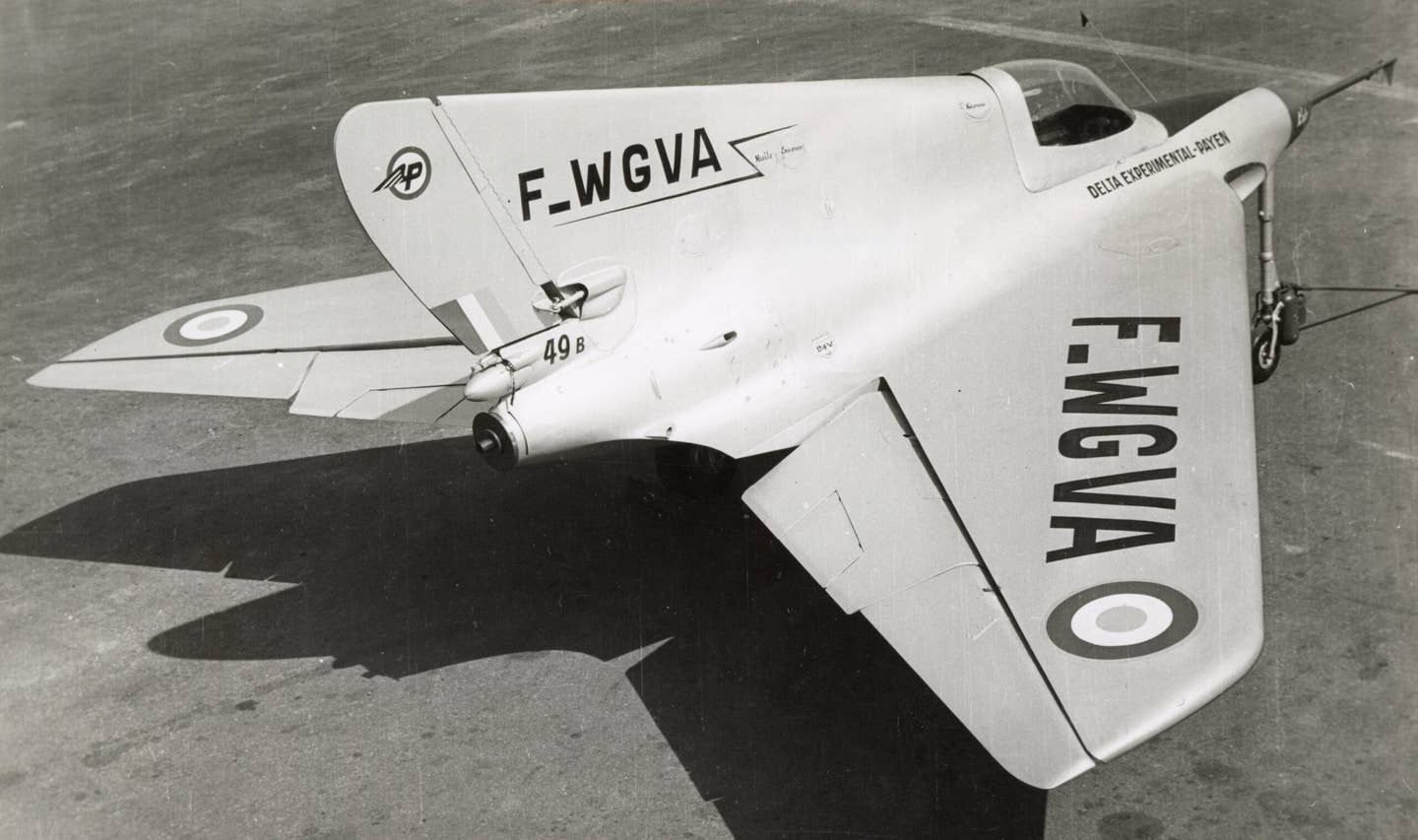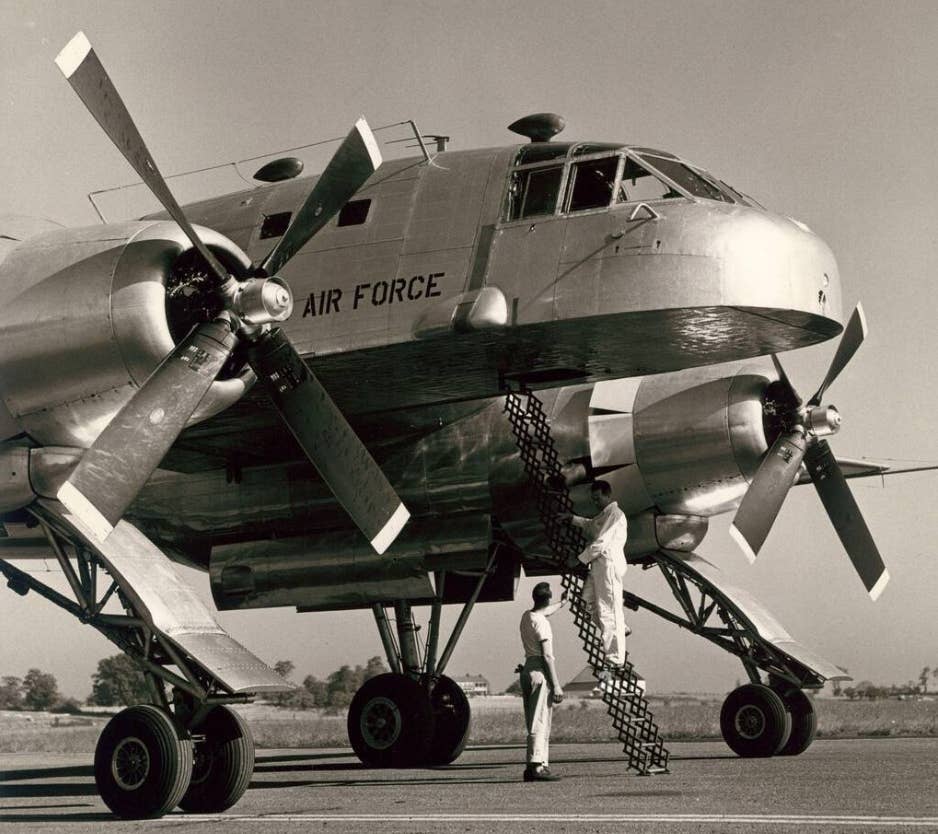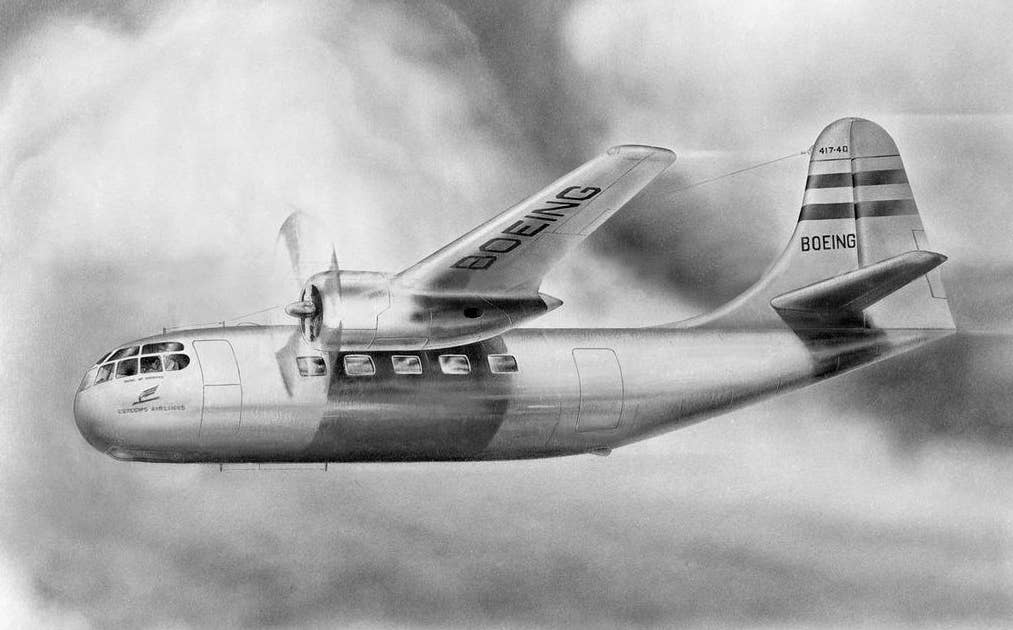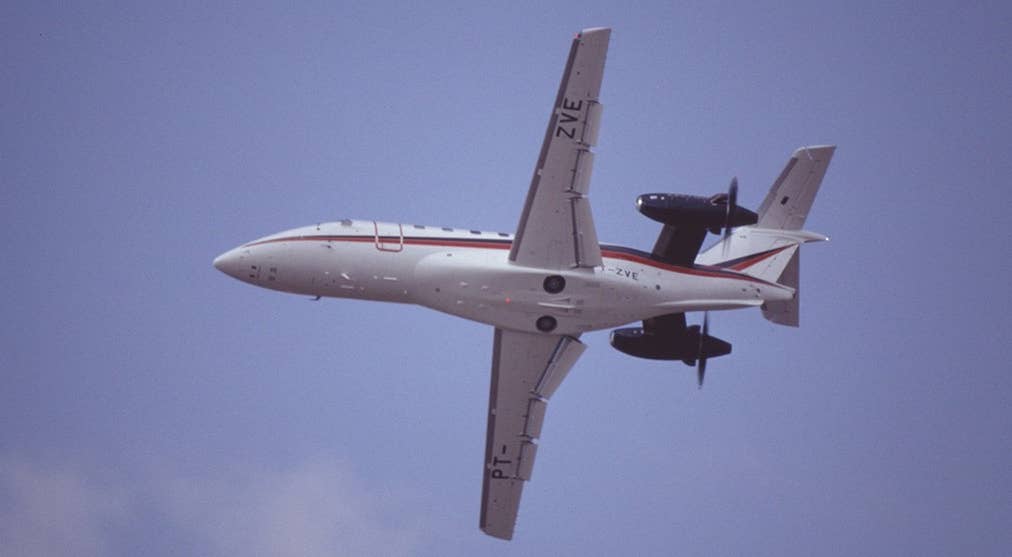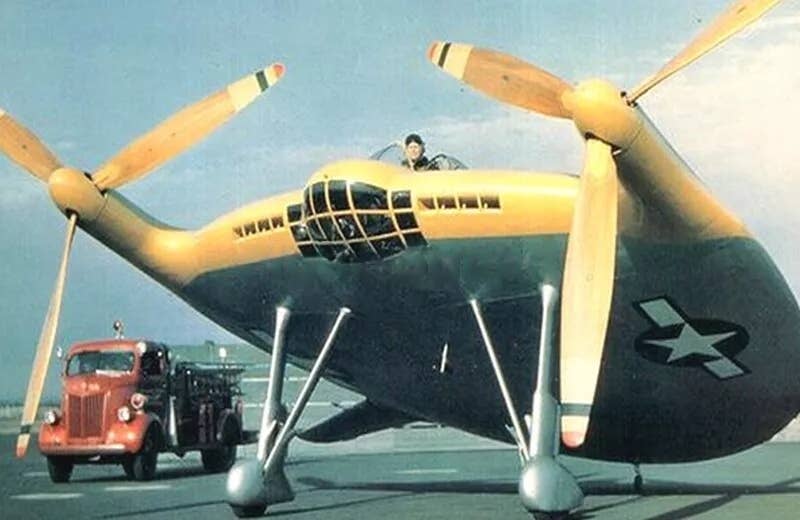The Douglas XB-42 ‘Mixmaster’ Flew Almost as Fast as It Looked
When approached to develop a fast bomber, Douglas responded with the Douglas XB-42 “Mixmaster,” a decidedly unconventional, piston-powered design promised to achieve nearly 500 mph.
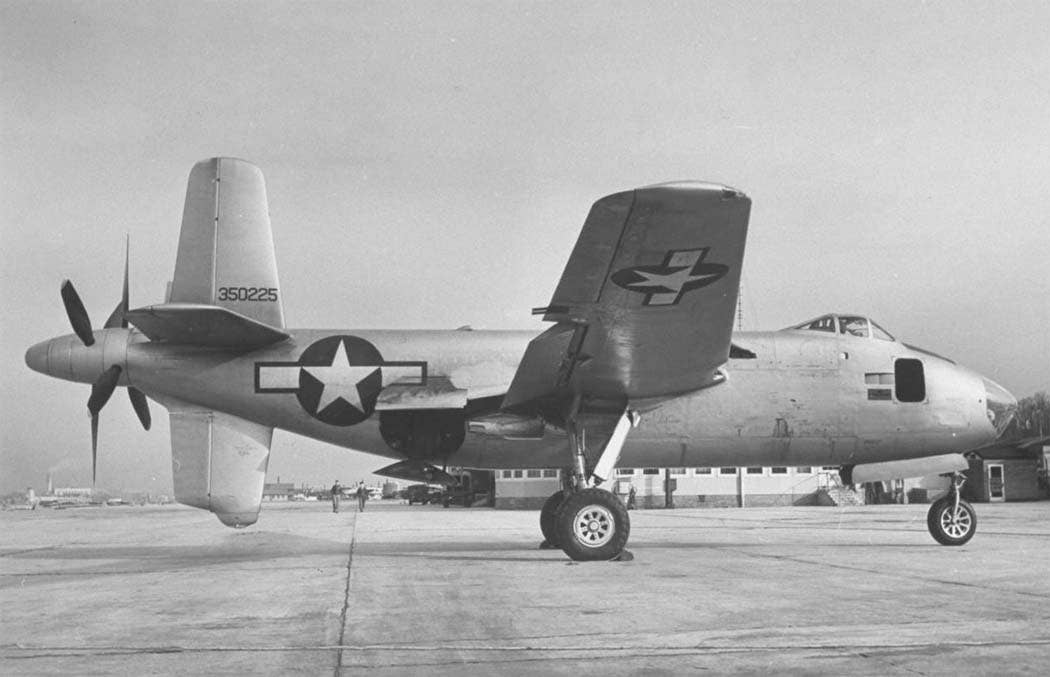
A side view of the XB-42, showing the dual-purpose, ventral vertical stabilizer that doubled as protection against prop strikes during takeoff and landing. [Photo: U.S. Army Air Forces]
The World War II era was an interesting time to be an aircraft engineer. Piston-engine technology was reaching a pinnacle of power and complexity, huge design and production demands were incoming from the war effort, and the advent of jet power had just emerged. It was a time to push up sleeves, sharpen pencils, and push boundaries.
This was certainly the case at Douglas Aircraft Co. When approached by the military to develop a small bomber that prioritized speed, Douglas responded with the XB-42, nicknamed “Mixmaster”—a decidedly unconventional, piston-powered design that it promised would achieve nearly 500 mph. When the military gave the go-ahead to build and fly two prototypes, it was up to the engineers to deliver the extreme performance.
To accomplish this, they focused on eliminating as much extraneous drag from the wing and airframe as possible. Rather than installing the two 1,800 hp Allison V-1710s (as used in the Bell P-39 Airacobra, Lockheed P-38 Lightning, Curtiss P-40 Warhawk, and others) in individual, wing-mounted nacelles, both engines were entirely housed within the aft fuselage. This kept the wing completely clean, without any of the parasite or interference drag inherent in the traditional nacelle configuration.
The engineers then developed a system of six individual drive shafts to link the engines to an aft gearbox, which drove a pair of three-bladed pusher propellers. The propellers were electrically controlled and able to feather, and the aft propeller was capable of adjusting its pitch even farther, providing reverse thrust. The feathering capability would be used later in the test program when one of the two engines would fail in flight.
The configuration didn’t deliver quite as much speed as Douglas had hoped. At 23,440 feet, the XB-42 could only achieve a maximum speed of 410 mph, and its cruise speed settled at 312 mph. Admirable numbers for a piston-powered bomber, but still well short of the company’s targets.
As other aircraft designers would also learn, pusher propellers located at the extreme aft end of the airframe create new and unique problems. Rotating too sharply during takeoff and flaring hard during landing, for example, would result in prop strikes. Douglas solved this by adding a ventral vertical stabilizer with an integrated shock absorber to isolate the airframe from the blows of tail strikes.
Another concern was the well-being of the flight crew in the event it became necessary to bail out of the aircraft. To prevent it from the grisly fate of entering two counter-rotating prop arcs after jumping, Douglas made it possible for the crew to first jettison the propellers and aft gearbox with an explosive charge. Instantly dumping more than 1,000 pounds from the extreme aft end of the airframe would wreak havoc on the center of gravity and produce a violent, nose-down pitching tendency.
One crew would experience this firsthand when it was forced to bail out during a test flight in December 1944. This crash would result in the loss of one of the two XB-42s. The remaining example would go on to fly in its original form and was later modified with two underwing turbojet engines, becoming the XB-42A.
Ultimately, the design would shed its propellers entirely and evolve into a pure jet when the static test airframe was developed into the jet-powered XB-43 Jetmaster. The sole surviving XB-42 awaits restoration at the National Museum of the U.S. Air Force in Dayton, Ohio.

Sign-up for newsletters & special offers!
Get the latest FLYING stories & special offers delivered directly to your inbox

